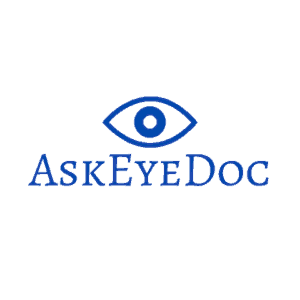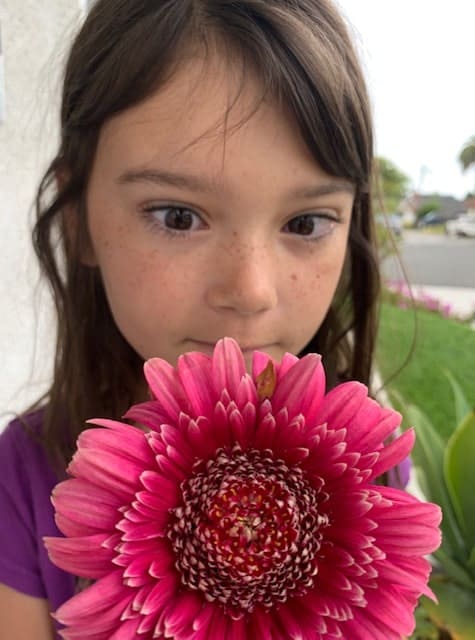Lazy Eye is a generic term for amblyopia, a condition that results in decreased visual potential due to a lack of visual clarity as a child (read on to learn more about this condition).
The human visual system is not fully developed at birth but continues to develop from the time we are born for about 9 years. In order for the visual system to completely develop, exposure to normal visual stimulus is required.
To clarify, that means that from birth until about 9 years old it is extremely important for both eyes to receive visual input from our surroundings in order to have a fully developed visual pathway to our brain.
3 causes of Amblyopia
1. Occlusion Amblyopia
Amblyopia means a permanent decrease of vision due to lack of visual stimulation to the brain before the age of 9.
Occlusion or deprivation amblyopia occurs as a result of the eye being closed or unable to see. This can occur due to a congenital cataract, a cataract that is present from birth (click here to learn more about cataracts), or occlusion of the eye due to a congenital eyelid droop (ptosis) or a patch on the eye after surgery or injury to the eye.
To reduce the likelihood of amblyopia, it is extremely important to remove the occlusion to the eye. This means prompt removal of a congenital cataract or surgery to correct a droopy eyelid.
2. Refractive Amblyopia
Amblyopia can occur in a child with a high refractive error in one or both eyes (click here to learn more about refractive error). A child who is very far-sighted (hyperopic) is more likely to develop amblyopia. It is very important for the child to wear glasses to get the proper visual stimulus needed for brain development along the visual pathway. A child with a high refractive error sometimes presents with an eye turn or strabismus. Which leads me into the next type of amblyopia, Strabismic amblyopia.
3. Strabismic Amblyopia
Strabismus is a condition that causes one or both eyes to turn. Amblyopia usually occurs in children with esotropia, which means an eye that turns inward toward the nose.
Convergence happens when we look up close. In the photo of my daughter looking at a flower her eyes turn in to see the flower, this is a normal phenomenon and not true strabismus. When a child has an eye turn the eye will turn in no matter what distance they are looking.
Strabismus can sometimes be treated with glasses, but occasionally surgical intervention is required. It is best to bring your child to see an Ophthalmologist who specializes in pediatrics and strabismus.
Treatment of Amblyopia
- Patching of the “good eye” (non-amblyopic eye)
- Medicated eye drops to blur the “good eye” (non-amblyopic eye)
- Glasses to correct any refractive error to improve vision
- Perceptual learning to stimulate the amblyopic eye
Traditional treatment may include using a patch or tape over the glasses lens of the non-amblyopic (“good eye”), forcing the child to use the amblyopic eye. This technique can be very effective as long as the child can keep the patch on. In some cases, a medicated eye drop can be used in the non-amblyopic eye to cause pupil dilation and blurred vision so that the amblyopic eye takes over and receives visual stimulation.
Glasses may be necessary if the child has a refractive error causing the vision to be blurry. It is very important during the first 9 years of life to have clear vision for the visual pathway of the brain to develop.
Perceptual learning is a new tool for childhood amblyopia, which use customized video games to improve visual acuity and function.
Visual Deprivation
David Hubel and Torston Wiesel received a Nobel prize for their work on visual development. The work consisted of a series of experiments in which they would suture shut one eyelid of a kitten at birth and keep it closed for different amounts of time. What they found was that the longer the eye was deprived of visual stimulation, the less likely that the visual pathway of the brain would develop fully.
In humans, this occurs much slower than cats with a critical period of visual exposure from birth until 7 to 9 years of age (source: Vaegan and Taylor).
Basically, the earlier in life that a child is exposed to visual stimulus the better their vision will be due to brain cell development along the visual pathway. The cells in the brain that form the visual pathway allowing us to see, need to be stimulated at a young age in order to develop. When the brain cells do not receive visual input they will not develop properly and result in a permanent decrease of visual acuity (click here to learn more on visual acuity).
Visual Deprivation means that usually one eye, but sometimes both eyes do not receive visual input from the world around us.
Conclusion
Amblyopia or Lazy eye means a permanent decrease of vision due to lack of visual stimulation to the brain before the age of 9. Having your child see an eye doctor at a young age is very important to ensure proper ocular development and function. At home, you can use the printable eye chart. If you notice your child squinting, rubbing their eyes or an eye turning in or out, bring them in to see an eye doctor immediately.
Treating amblyopia at a young age could prevent visual problems later in life.


